Workation » Best Workation Locations and Why You Should Visit Them » Italy Workation – Working and Vacationing in Italy » Things to do in Italy during Workation » 12 Unesco World Heritage Sites to Visit in Italy on Workation
Unesco World Heritage Sites In Italy to Visit on Workation
Tourists from around the world travel the country eager to visit one of the many different Unesco World Heritage sites that you can visit during your Italy Workation package.
Purists could spend months roaming the country in an attempt to visit the ever-growing heritage sites spanning the country, which accounts for five percent of the world’s total heritage list. Italy evokes a variety of impressions, from the ancient civilizations leading to the Roman Empire to the mesmerizing artwork reflecting the eras of Western European aesthetic movements.
The following is a curated list of nine of the country’s most interesting sites connected to remarkable history, fabulous art, and unforgettable architecture.
Rome’s Historic Center
What is Rome’s Historic Center?
Rome’s historic city center is the easiest place to start when talking about Italy’s famous Unesco protected areas. Its fame is well deserved and protected status necessary to preserve the more than 2 millennia of history continuing to rise above the contemporary life along the streets.
Cobblestone lanes, wide boulevards, the epic visions of the Colosseum, and the stoic image of Oceanus at the heart of the Trevi Fountain create the perfect image of the Eternal City. Medieval buildings, churches defending Renaissance masterpieces, and the remains of emperors dictate treasures put in the spotlight and hidden from view.
Foundations of a Roman temple at the foot of Capitoline Hill or powerful pillars supporting the Pantheon since the 2nd century AD demonstrate how Rome has stood as a pillar of history since its founding in 753 BCE, with its powerful reputation projected through the art, architecture, and heritage of the historic city center.
Why Visit?
Since the rule of Augustus, Rome’s center has stood as a demonstration of power, elite beauty, and the heart of an empire featured in the towering walls of the Colosseum. The daily lives of Romans buzzed in the Forum, gods took center stage in the Pantheon, and the city seemed to be reborn throughout the centuries as the empire fell, Christianity took power, and the Renaissance emerged.
Rome is known as the Eternal City because of its deep-rooted history as well as its ability to evolve with the changing times rather than combating the power struggles. Rome’s historic center is iconic, with much of Italy’s most notable pieces of art, architecture, and history featured within walking distance from one another.
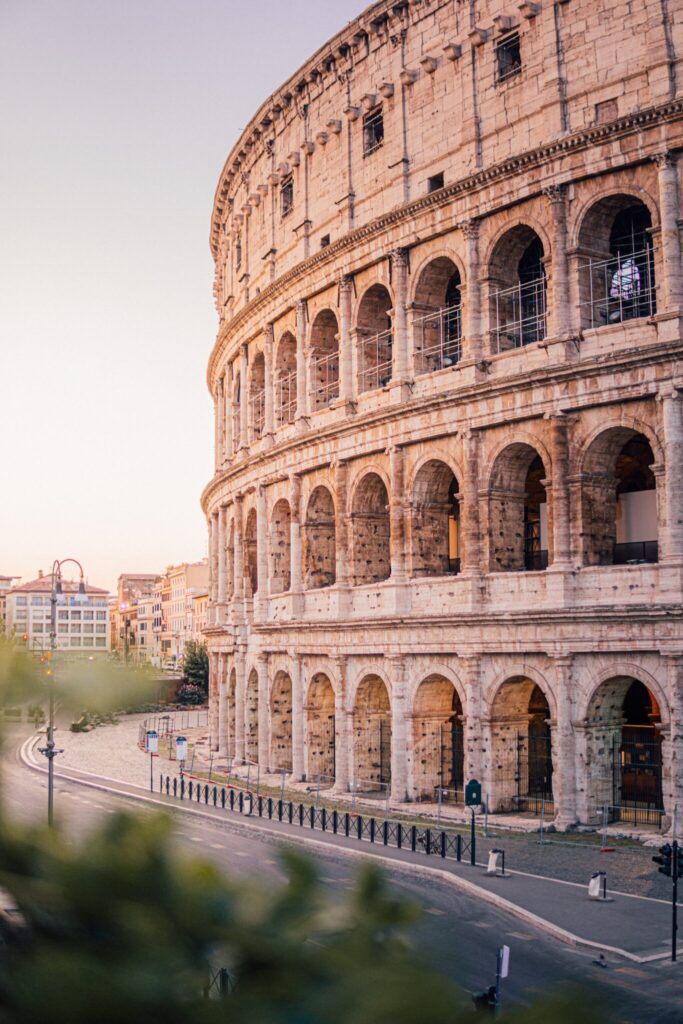

Pompeii
What is Pompeii?
In the year 79 AD, Mount Vesuvius erupted in a tremendous blast, covering the cities of Pompeii and Herculaneum in ash and pumice, ending the reign of the commercial centers of the Roman region of Campania, but ensuring their myths and histories would continue to draw visitors from around the globe nearly 2,000 years later.
Pompeii was the largest commercial center in the area, a moneyed resort for wealthy Roman citizens and merchants exporting wine and fish until the eruption captured the town’s way of life in the layers of sediment and time.
Why Visit?
Pompeii deserves acclaim and prestige for its role in opening a new understanding of the ancient Roman world. The ruins are captivating and warrant the anecdotes of providing the most engrossing archeological experience in Italy due to the unique ways burning fragments of pumice stone buried the city in up to 20 feet of earth and preserved a slice of the ancient life across nearly 160 acres.
Walking down the Roman street provides a unique view of millennia-old houses, temples, shops, cafes, and amphitheaters. The history of the city dates back to the 7th century BC under the settlement of the Campanian Oscans. The city fell under the reign of conquering Greeks and Samnites before the Romans arrived in the 1st century BC. The monumental ancient ruins surprise visitors with the vivid impression of a once-forgotten lifestyle.

Church and Dominican Convent of Santa Maria delle Grazie
What is the Church and Dominican Convent of Santa Maria delle Grazie
The Church and Dominican Convent of Santa Maria delle Grazie in Milan is a work of masterful architecture in and of itself, but the main draw to the hallowed grounds is the refectory wall on which the master artist Leonardo da Vinci composed his renowned piece, The Last Supper.
The former refectory was erected in the late 15th century with the dome and cloister added in later years under the design of Donato Bramante. The church gained prominence as the intended Sforza family mausoleum before the family fell from power to French invaders two years after da Vinci completed his piece.
The deterioration of the oils happened before the completion of the painting, as moisture crept into the walls, causing the colors to flake. 18th– and 19th-century refurbishments only worsened the damage. The faded glory of the original continues to provide a breathtaking image when viewed in person, causing visitors and art historians to wonder how immaculate and ethereal the original must have looked.
Why Visit?
The reason for the painting’s renowned reputation derives from the drastic modifications the painter made to the layout and scene commonly depicted in Italian art. The most notable difference was the painter’s decision to capture the Gospels with realistic expressions and features as opposed to the wraithlike qualities popular in the Middle Ages and the beginning of the Renaissance. Da Vinci also included an unobtrusive repetition of threes to create a sense of harmony in the background to accentuate the drama in the foreground. The beauty of the church pales in comparison to the enchanting features of The Last Supper.
Pitti Palace
What Is the Pitti Palace
The combination of the Pitti palace and gardens are located on the southern shores of the Arno River, within walking distance of the Ponte Vecchio, Florence’s Old Bridge, and the Uffizi Gallery. The grounds offered an escape from the city center and acted as a treasure house for generations of Medici. The palace and gardens offer insight into the elaborate function of the historic home, along with the offering the chance to stroll around the illustrious presentation of a true Italianate garden.
Why Visit?
The grand palace was built in the 1450s under the patronage of Luca Pitti, an ambitious and well-known Florentine banker. The Medici family bought the complex in the mid-16h century to become the chief residence of the Grand Duchy of Tuscany. As wealth and prestige of the family grew, the treasures filling the palace accumulated to luxurious proportions, filling the different rooms inside the palace with paintings, plates, jewelry, and elegant furniture.
The entire Historic Center of Florence is an Unesco site but to the surprise of many visitors, the Pitti Palace is the largest museum complex in the city, encompassing nearly 345,000 square feet. The museum houses an impressive display of silver, along with art recreating life on the grounds during the era of the House of Savoy. An exquisite collection of amber carvings, ivory miniatures, and glittering headpieces decorate the ground floor amongst gems, jewels, and audience chambers with elaborate frescoes. The Sala di Giovanni da San Giovanni contains a lavish fresco depicting the life and times of Lorenzo the Magnificent spanning the walls from floor to ceiling. The staggering amount of works are often displayed on top of one another, turning the visual display into an overwhelming aesthetic.
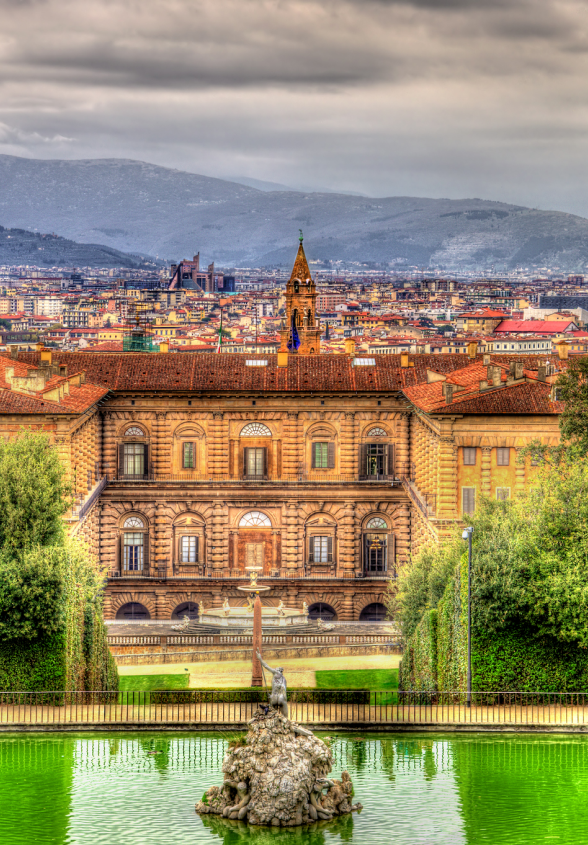
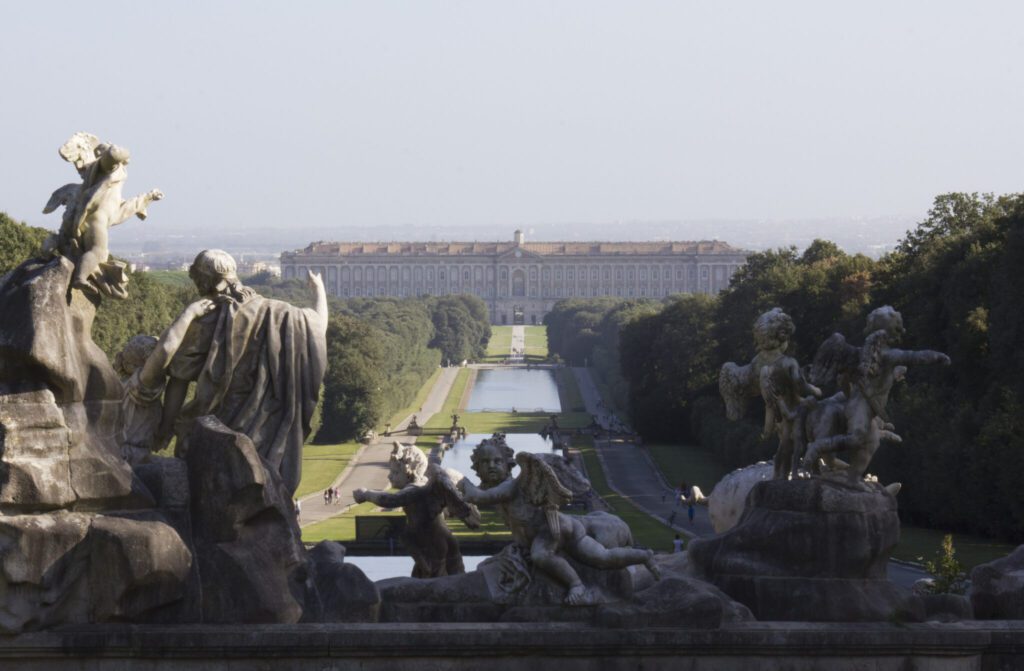
Caserta Palace
What Is Caserta Palace
Compelling palaces pepper the landscape of Italy and date back to the medieval times or the Roman empire, but none of the grand edifices are more breathtaking than the 18th century baroque masterpiece of the Casterta Palace. Visitors to Southern Italy often overlook the beauty and brilliance of the palace grounds in favor of the historic streets of Pompeii, the colorful views of Amalfi, and the pizza of Naples. Taking the time to visit the palace ensures a trip into affluence, splendor, and the lifestyle of baroque royalty.
Each of the five stories encompasses more than 500,000 square feet, combining to more than 2.5 million square feet consisting of 1,200 rooms with an immense stairway leading to the royal apartments. Exuberant frescoes, art, tapestries, and baroque period furniture decorate the rooms and halls beneath the shimmering crystal ornaments.
The restored back rooms house a historic collection of wooden models and the original sketches crafted by the architect and his son while designing the palace grounds. The royal apartments have become galleries to an underrated collection of modern art commissioned after a devastating earthquake in the 1980s. Artists like Robert Mapplethorpe, Keith Haring, Mimmo Paladino, and Jannis Kounellis are featured in the galleries.
Why Visit?
The complex has become a figure in contemporary pop culture and maintains the prestige of elegant gardens surpassing the lavishness of the palace interior. The gardens overtake nearly 300 acres and provide an extension of the formal baroque design decorating halls and façade of the greater palace. Vistas add texture to the hilly terrain inspired by the park of Versailles.
Artificial fountains and waterfalls border the botanical garden located in the upper section of the park. Hydraulics help run the water from a wide, straight canal to the cascades and fountains decorating the magnificent work of landscaping. The sounds of rushing water emanate from the Aqueduct Carolino, which feeds into the Ponti della Valle, a work of intricate infrastructure powered by mills and once serving the palace, ironworks, and manufacturing industries located around the canal.
Intricate pathways wind through the exotic flora and around the tricking pools offering romantic getaways and perfect places for children to play hide-and-seek. The garden is one of the best examples of classic European landscaping and remains one of the most coveted gardens in Europe.
Tarquinia
What is Tarquinia?
The Etruscan civilization predates the Roman Republic by nearly a millennium, with origins dating back to the 9th century BC. The culture experienced a climax around the 6th century BC before fading into the annals of history and merging with the culture of the emerging Roman Empire.
Archeologists and historians have been unable to find answers to the origins of the Etruscan, nor a lingering trace of their cities and communities in regards to ethnic and social standards. The Etruscans dug their tombs into the rock and made the subterranean vaults accessible through inclined corridors and stairways.
The tombs contained sarcophagi and the deceased’s personal possessions. The more affluent members of the community had wall paintings decorating their tombs. The earliest of the sarcophagi contains carvings of the supine body for reference to the dead. During the 6th century paintings became prevalent in the tombs, covering entire surfaces. By the 4th century BC paintings decorated marble and alabaster sarcophagi.
Why Visit?
The most famous vault in the complex is the Tomb of the Lionesses, which dates back to the 4th century BC. The small room contains two slopes in the roof. A painting on the ceiling depicts birds flying and dolphins leaping around the Etruscan aristocracy. The main themes of the art reflect music, dancing, and dining. Other tombs in the Necropolis complex known for their elegant wall paintings include:
- Tomb of the Leopards
- Tomb of the Augurs
- Tomb of Hunting and Fishing
- Tomb of the Bulls
The best museum for learning about the Etruscan civilization outside of Rome is located in the 15th century Palazzo Vitelleschi, situated in the medieval heart of the town of Tarquinia. The galleries present an unparalleled evolution of the Etruscan civilization between its genesis in the 12th century BC to its struggle and eventual surrender to Rome in the 3rd century BC. There is also a spectacular ancient artifact depicting a pair of winged horses.
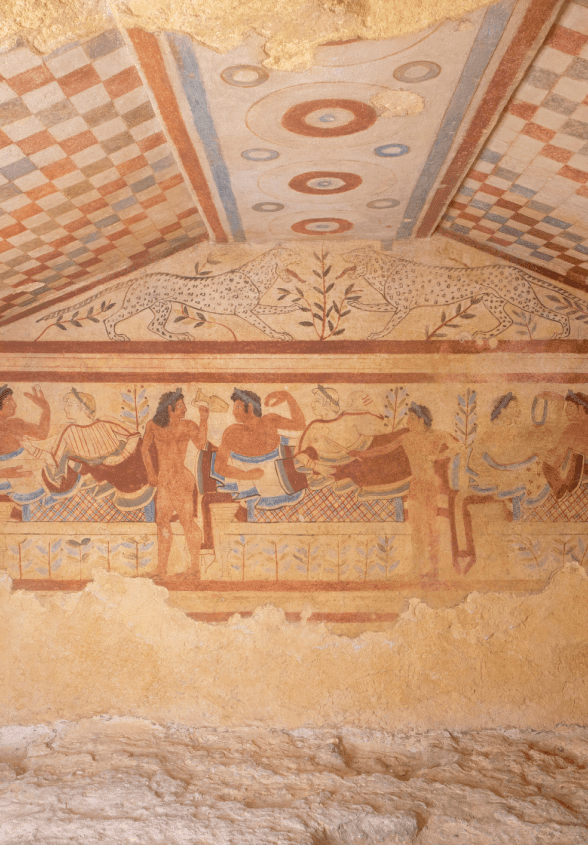

Amalfi Coast
What is the Amalfi Coast?
The Amalfi Coast has a history dating back to the Roman Empire and an entangled connection to Constantinople. The main city of Amalfi had a strong armada trading often with the distant kingdom while gaining financial and naval power at home.
The prestige of the former naval powerhouse provided stability for the growth of surrounding towns and villages along the winding coastline known over the past century for its colorful architecture steep cliffs, and clean beaches. The legacies of the individual towns retain their sense of wonder and add to the artistic and historic value of the region, making it a natural and historical treasure protected by the Unesco title.
Why Visit?
The Amalfi Coast is a famous Italian escape, with a steep but colorful coastline, narrow streets, and fabulous views. Visiting the numerous towns along the nearly 25-mile stretch of road provides great panoramas of the water and immersive possibilities into history by visiting the antique towns.
The most famous charms emerge from the lemon-clad streets of Positano, the bronze doors of Amalfi, and the sensational panoramic vistas from the edges of elevated Ravello. Other popular corners of the coastline include the various beaches decorated with relaxing lounge chairs and the church of Vietri sul Mare, known for the graceful and vibrant ceramic tiles made around the Amalfi Coast.
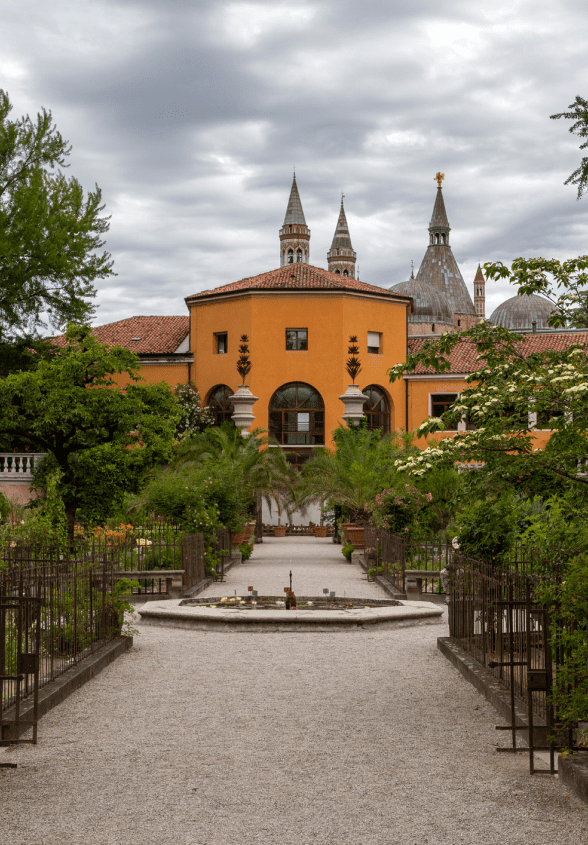
Botanical Garden of Padua
What is the Botanical Garden of Padua?
Botanical gardens have become a staple in major cities across the globe with the grounds representing exotic flora from secluded rainforests, unique desert landscapes, and marvelous mountainous terrain, however, the Botanical Garden in Padua was the first of its kind. The park was established in the year 1545 and quickly became the regional center for scientific research.
The gardens played a pivotal role in the developing fields of medicine and chemistry over the course of centuries. The design has a circular central plot representing the globe and ringed by water. Architects added balustrades, pumping installations, and greenhouses later one. The square at the center of the original circular plot is divided into four parts oriented by the cardinal directions.
Why Visit?
The gardens also house a library containing more than 50,000 volumes and manuscripts of historical texts important to the field of herbarium. Over 6,000 species of rare plants are arranged around the garden indexed by their ecological conditions.
The gardens have made a profound contribution to the development of modern scientific disciplines for nearly five centuries. The grounds encompass more than five acres. Francesco Bonafede, Chair of the Lectura Simplicium, ordered the construction of an herbarium and botanical garden to assist in the research the Paduan monks performed in finding a relationship between nature and science.
Cerveteri
What is Cerveteri?
The city of Cerveteri, once known as Kysry to the Etruscans and Caere to Latin-speakers, was a powerful and important commercial port on the Mediterranean Sea between the 7th and 5th centuries BC. The city fell to Rome in the mid-4th century BC. The necropolises belonging to the former city are located less than 30 miles from Rome.
The National Museum of Cerveteri houses numerous Etruscan artifacts, including a celebrated sarcophagus belonging to a married couple. The museum is renowned for its use of technology as applied to innovative galleries and exhibitions, including the “touch on glass” project that allows visitors to touch the glass on the display cases of artifacts more than 2,000 years old to bring the objects and their history to life.
Anecdotes, secrets, and mysteries of the Etruscan civilization reveal themselves on the glass and connect to the artifact on display. The necropolis is one of the most imposing and magnificent burial sites of the ancient Mediterranean. The mounds create hills rolling across the otherwise empty landscape. The earliest tombs date back to the 9th century BC and have a pit shape in which the dead threw ashes.
Why Visit?
The variety of tombs provides insight into the evolution of burial customs in the Etruscan civilization. The 7th-century tomb of Tumulo Mengarelli has a plain interior representing the original burial methods and sparse décor. Rilievi’s Tomb from the 6th century retains traces of painted reliefs illustrating household items and symbols of the underworld.
The family’s status gauged the types of tombs and the amount of decoration. The Tomb of Regolini-Galassi led archeologists to discover rich gold dating back to the 7th century BC. Cerveteri maintains the nearly forgotten traditions of the Etruscan civilization and allows visitors to view a wide array of different tombs on the vast grounds, including:
- Tomb of the Capitals
- Tomb of the Shields and Chairs
- Tomb of the Greek Vases
- Tomb of the Cornice
- Tomb of the Reliefs
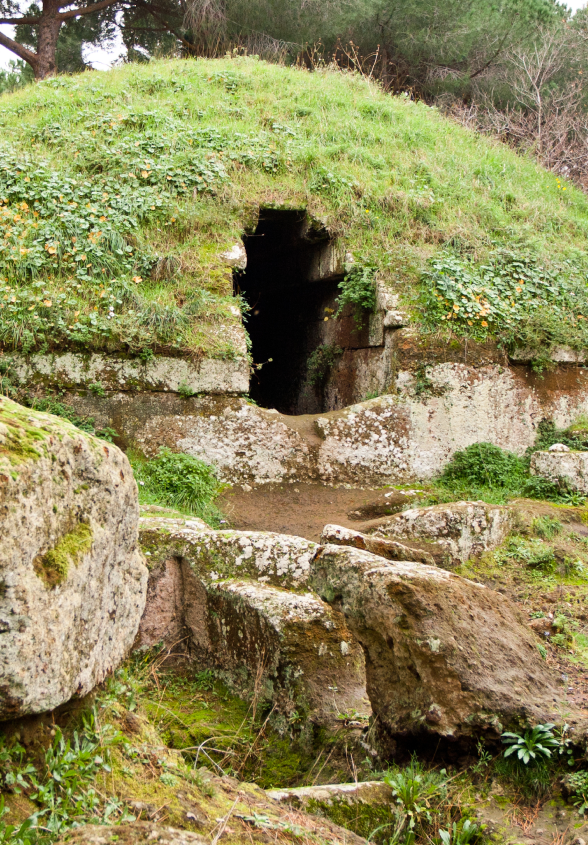
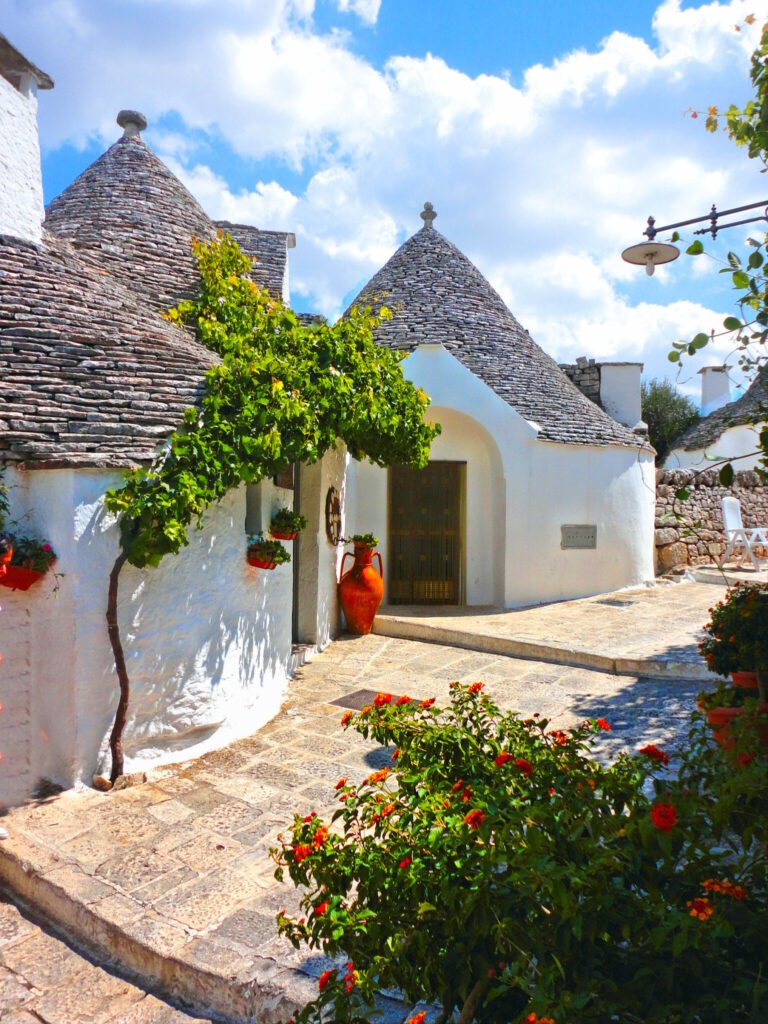
Alberobello
What is Alberobello?
Alberobello is a city in Puglia known for its trulli homes, with architecture resembling fairy designs. The structures use a type of mortarless drywall dating to ancient times and feature pyramidal or conical shapes supported by limestone slabs.
The neighbors of trulli were constructed around the 14th century and span more than 27 acres of the city. What was once considered a style of temporary shelter made as a storage house or along the fields have become permanent small-scale dwellings featuring a tradition that has lasted in the city for more than a millennium.
Why Visit?
The virtue of the trulli lies in the simplicity of design and construction but the beauty of the collective homes creates a storybook atmosphere unlike anywhere else in the world. The continued preservation of the construction and the neighborhoods provide an authentic form of decoration enhanced by the traditional material used during the assembly of each home.
Walking through the 1,500 conical-shaped homes that may date back to the 14th century gives an immersive experience resulting in the best view over the city along the Belvedere Trulli lookout.
Herculaneum
What is Herculaneum?
The Roman fishing town of Herculaneum had about 4,000 inhabitants. Instead of caving to the pressures of falling ash, pumice, and thunderous fireballs, fast-flowing molten lava enveloped the city from the ground up supporting the walls and roofs in a unique preservation of the multi-storied homes, doors, and staircases, not to mention the organic materials such as fish, wine, and olive oil.
Why Visit?
Herculaneum is the smaller, lesser-known ruins providing a different, and some might say better, experience than the larger renowned ghost town of Pompeii. The hard covering nearly 100 feet deep helped preserve the beauty of the former Roman colony. The less prestigious ruins have also retained their most notable artworks and findings, while the majority of Pompeii’s artifacts and priceless details have been either lost or removed for safe-keeping due to the elements and amount of visitors traveling through the streets each year.
The lava fossilized the city, preserving even the furniture and clothing. A moat surrounding the town is actually the former shoreline from the Bay of Naples. A large percentage of the ancient city’s homes and streets lie beneath the contemporary grounds of Ercolano.
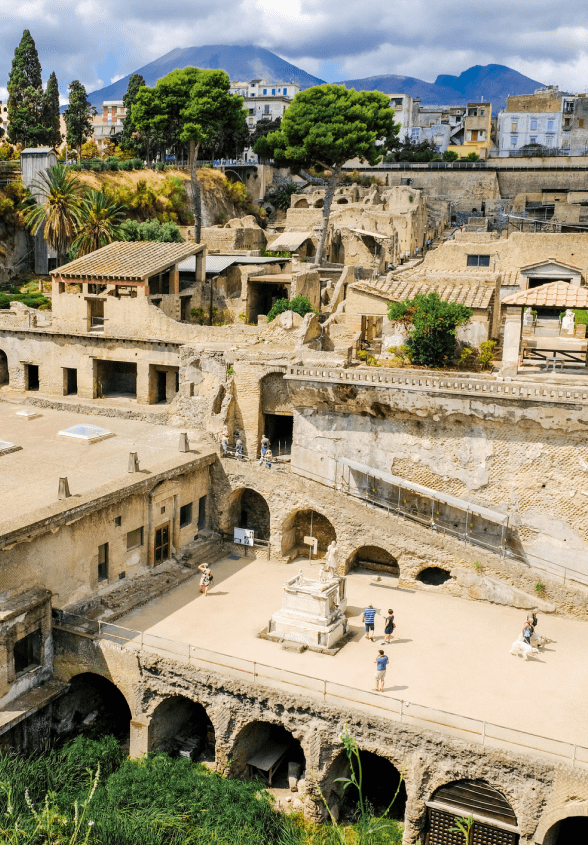
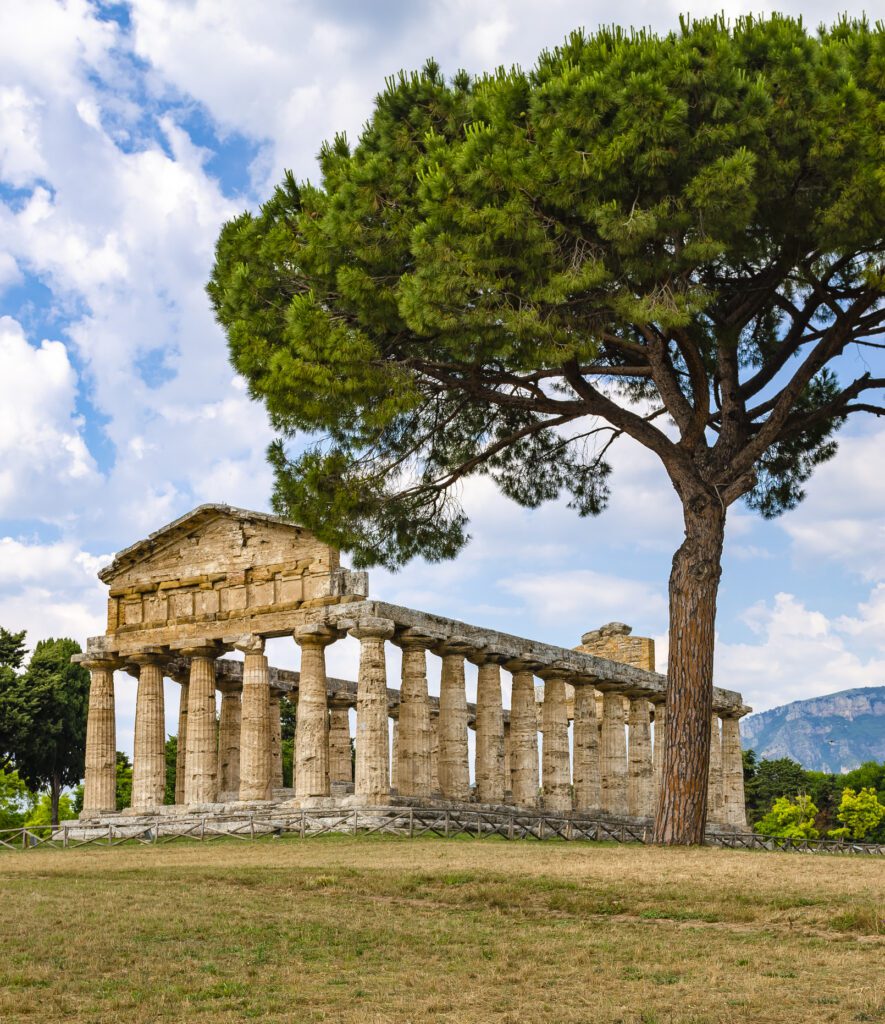
Paestum
What is Paestum?
Paestum brings the deep and layered history of the Campania region to life on the plain near the Gulf of Salerno with the former Greek settlement temples. Established around 600 BC, the surprising Greek ruins provide a different view of the historic grounds of the Italian Peninsula as the oldest and last of the Greek architectural settlements remaining on the mainland. The Greeks founded their settlement on the plain in 600 BC. The Romans conquered the civilization four centuries later in 273 BC, with the temples and grounds offering signs of the conquest around the best-preserved ruins. Three temples, each dedicated to a Greek goddess, continue to soar above the flat plains of Campania.
Why Visit?
The central temple, known as the Temple of Hera II, is the most magnificent structure in the complex. Most guidebooks, especially older ones in need of updating, refer to the second temple as the Temple of Neptune, but archeologists have unearthed sufficient evidence to know the temple was in fact dedicated to Hera, the goddess of women and marriage.
The votive found buried close to the structure provided the ultimate proof of the temple’s patron goddess. The Greeks erected the fascinating structure in the 5th century BC. The temple remains intact, providing one of the best-preserved examples of Greek architecture in the world. The massive architectural feat presents a structure nearly 200 feet long by 80 feet wide.
The Temple of Hera I was the first temple erected in the area and dedicated to the same goddess, as proven by the discovered votive offerings. The offerings include terracotta statues with Greek letters dating back to the mid-6th century BC. The final temple was dedicated to Athena, the goddess of wisdom and heroism. It was erected in 500 BC and later used as a Christian church. The remarkable plains of Paestum also contain a Roman amphitheater and a museum, the latter of which contains famous frescoes painted in the 5th century BC.
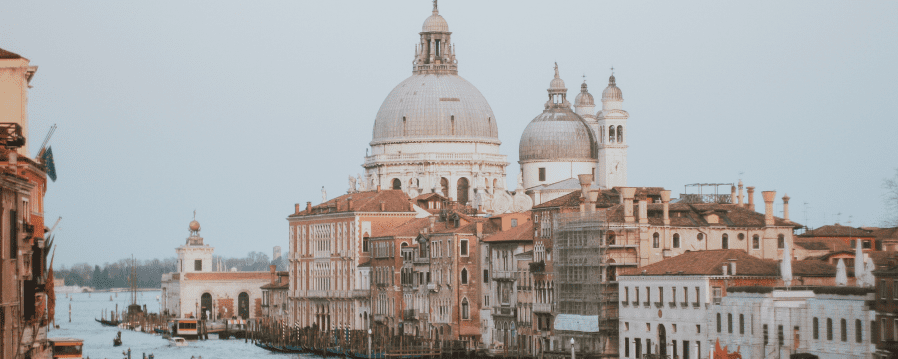
Visit Unesco World Heritage Sites on Your Italy Workation
Italy is home to the largest number of Unesco World Heritage sites in the world, each telling their own story and its entanglement with the contemporary world. Spending time walking through the natural beauty or cultural splendor can introduce you to the endless connections between the ancient world and the traditions preserved through generations found in the art, architecture, or local customs. Enjoy the cafe surrounded by ancient beauty or wander along medieval treasures as you learn to focus on your best balance between work and life.
Find more information on where to visit and what you can do to surpass your expectations before speaking with Workation for your Italy visit. We can help enhance your productivity and maximize your connection by combining our understanding of local life and culture with the experiences you want to have. Take one step closer to planning your Workation or find more information with our ideas of The Most Unique Lodgings in Italy.

